THE PORT OF ELORO

Photo Source: Antonino Rampulla
We have already spoken extensively about Eloro
here and
here. It is no secret that he considers it
among
the most fascinating places in the
district and when I have the opportunity, for example to act as a guide to
some friends, I go there with pleasure. Just during one of my last walks along
the "path" that "connects" the beach of Eloro with the
Pizzuta beach, I had the opportunity to focus on some rock formations that,
given their particular shape, have always aroused my curiosity, suggesting not
only that they had nothing natural (and therefore they were linked to the
archaeological remains abandoned behind the fence) but also that that stretch
of jagged coast, between the two splendid sandy beaches,
in the past had to present itself in a radically different way.

However, I have a duty to clarify that
walking that "path" (which I
am not by chance writing in quotation marks, because formally it is not a path)
is extremely dangerous, since it is
very narrow and close to the cliff. There are also wells (probably artificial)
in the open air, overlooking the sea. So do not venture to follow it with
children in tow or in slippers or at night or drunk drunk ... Among other
things, it does not come out directly on the beach of Eloro:
it is necessary to climb the rocks, and
it is not easy to do so. In short, pay close attention!

We know of Eloro that it was a
sub-colony of Syracuse, founded not as
a military outpost, that is, in order to sight and contain any attempts to
attack by the indigenous Sicilian populations (the significant technological
and organizational difference in the military did not make it necessary ), but
to occupy a promontory useful for the
foundation of a colony by adverse Greek factions (to avoid therefore
finding themselves a competitive Greek polis around the corner). Indeed, it is
believed that part of the Elorine population was made up of Sicilian indigenous
people integrated into Hellenic society, therefore in a climate of relative
serenity.

Given the presence of the remains of an agora,
at least a couple of temples and a theater, a lively economic and cultural life
is conceivable which would have made
plausible
the existence of a port. Given that in the past, in the absence of
mechanical means, a stone would not have moved if it was not necessary,
the presence of artificially worked stone
blocks close to the cliff, suggests that that area, a couple of millennia
ago, welcomed port infrastructures which, abandoned in later periods, then
collapsed into the sea due to storm surges (as hypothesized by the evident
fractures on the blocks). After the initial and flourishing Hellenic phase, it
seems that Eloro was gradually abandoned, probably also due to the excessive
proximity and subordination to Syracuse. Gradually the promontory of Eloro was
exploited for increasingly exclusively military purposes, as evidenced by the
remains of a Roman fortress, on which a watchtower was built in the Aragonese
era. The last traces of important anthropizations are lost in the Byzantine
era, with all due respect to what temples, theater, agora and port could have
developed.
Text Source: Antonino Rampulla
ARCHIVE NEWS
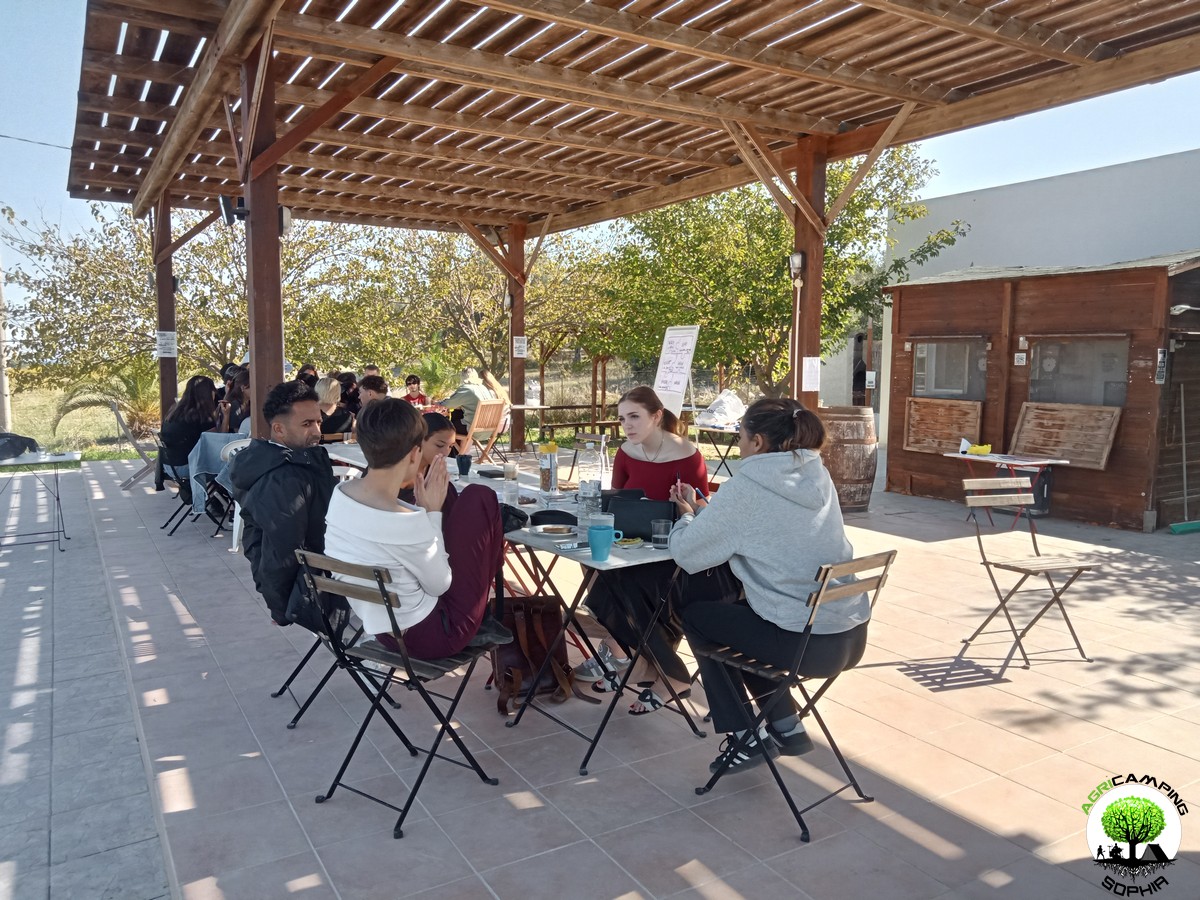 DO YOU WANT TO ORGANIZE AN ERASMUS AT AGRICAMPING SOPHIA?
DO YOU WANT TO ORGANIZE AN ERASMUS AT AGRICAMPING SOPHIA?
WHAT IS AGRICAMPING SOPHIA?
It is a campsite with tent pitches, glamping tents, mobile homes and bungalows
WHERE IS IT?
In Italy, in Sicily, near Syracuse, in Pachino: 36.736883, 15.095610
HOW TO CONTACT US?
info@agricampingsophia.it
(SPEAK ENGLISH) +39 3473079242 – (ONLY SPEAK ITALIAN) +39 3452396095
WHAT DO WE OFFER?
We offer hospitality and catering for Erasmus projects
FOR HOW MANY PEOPLE?
We can have 4-7 single beds in the Socrate Bungalow, 6-10 single beds in the Platone Mobile Homes, 4-6 single beds in the Aristotele Mobile Homes, 4 single beds in the Iblone Mobile Homes, 4 single beds in the single beds in the Empedocle Glamping Tents. In total we therefore have 18 comfortable single places or 31 single places with a fair spirit of adaptation.
IN WHICH PERIOD CAN AGRICAMPING SOPHIA BE AVAILABLE?
The most suitable periods to use our services...
 CART RUTS MODELED ON SOFT ROCK?
CART RUTS MODELED ON SOFT ROCK?
Read also RACK OR HOUSING FOR CLOGS?
Some cart ruts from the Targia district, in Syracuse, and most of the cart ruts from Granatari Vecchi, in Rosolini, give the impression of having been impressed, modelled, on a rock that was originally viscous, not entirely solid. As absurd as this hypothesis may seem, especially in Granatari Vecchi, the softness of the shapes and the at least anomalous uniformity of the rock bank, as if it were a concrete casting, which hosts the cart ruts, is unicum compared to the lithic context in the area.
In Targia this phenomenon is less impressive but if we consider the cart ruts essentially cart tracks, therefore furrowed roads indirectly resulting from the repeated passage of carts along the same route, we do not understand why such uniformity and smoothness is present, in the majority of cases, also on the parts not affected by the passage of the...
 RACK OR HOUSING FOR CLOGS?
RACK OR HOUSING FOR CLOGS?
Read also CART RUTS CUT FROM QUARRIES
In the presence of slopes, even slight ones, in some cart ruts in the Targia district, in Syracuse, central holes are found with a diameter of between 30 and 50 centimeters and a depth of 15-20 centimeters, spaced about 50 centimeters apart. Neither the position (they are not exactly in the center of the cart ruts and perfectly aligned with each other), nor the shape appear perfectly regular: either the passage of time and any wear have profoundly modified their original shape or, simply, they have never had a systematic regularity. However, the offset in position between one hole and another is never completely “off-axis”: there is always a portion about twenty centimeters wide that coincides with the same portion of the previous and subsequent hole. The best preserved and most defined holes are found in the cart ruts usually called Scala...
 CART RUTS CUT FROM QUARRIES
CART RUTS CUT FROM QUARRIES
Back to CART RUTS AND A FEW TOO MANY PROJECTIONS
I will skip any preamble, referring to what has already been written regarding the presence of cart ruts in south-eastern Sicily.
The easy academic tendency has been, in most cases concerning cart ruts, to consider them in terms of the latomie, or quarries, with which very often (for example in the cases of the Targia or Pizzuta districts) they share the same territory.
According to this theory, the carraie would have been indirectly created due to the wear of the rock at each passage of carts or sleds loaded with extracted stone blocks. I will not repeat the arguments presented so far in order to demonstrate that this is a theory that has little solid foundations on an in-depth analysis of the cart ruts. However, I will add a piece by demonstrating the implausibility of a connection between them in both chronological and functional...
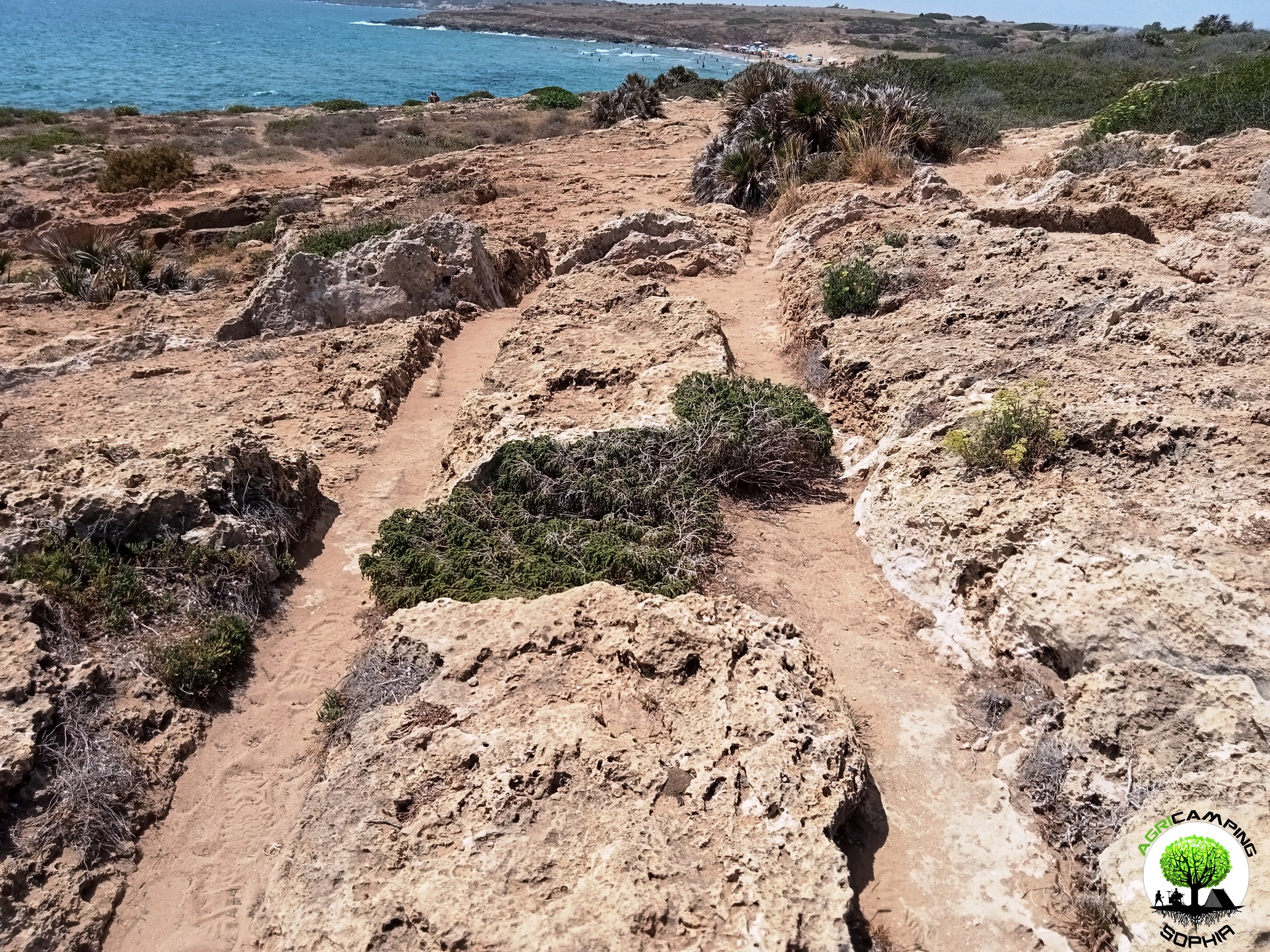 CART RUTS AND A FEW TOO MANY PROJECTIONS
CART RUTS AND A FEW TOO MANY PROJECTIONS
Read also THE POLISHING OF THE CART RUTS
I will skip any preamble, referring to to what has already been written regarding the presence of cart ruts in south-eastern Sicily.Considering the possibility that the cart ruts were gradually dug by the passage of carts pulled by pack animals, for example pairs of oxen, observing certain sections of the cart ruts present in the Granatari Vecchi district, in Rosolini, and in the Pizzuta district, close to the Vendicari Reserve, two questions arise:
1. Why force the animals to pass over rough surfaces and protrusions high, compared to the base of the furrows, even 60-70 centimeters?
2. Why, in the presence of such obstacles, not opt for a detour?
For Mottershead, Pearson and Schaefer such protrusions appeared later, since at the time of the passage of the wagons, a layer of earth covered the rocky bank, thus not making the obstacle...
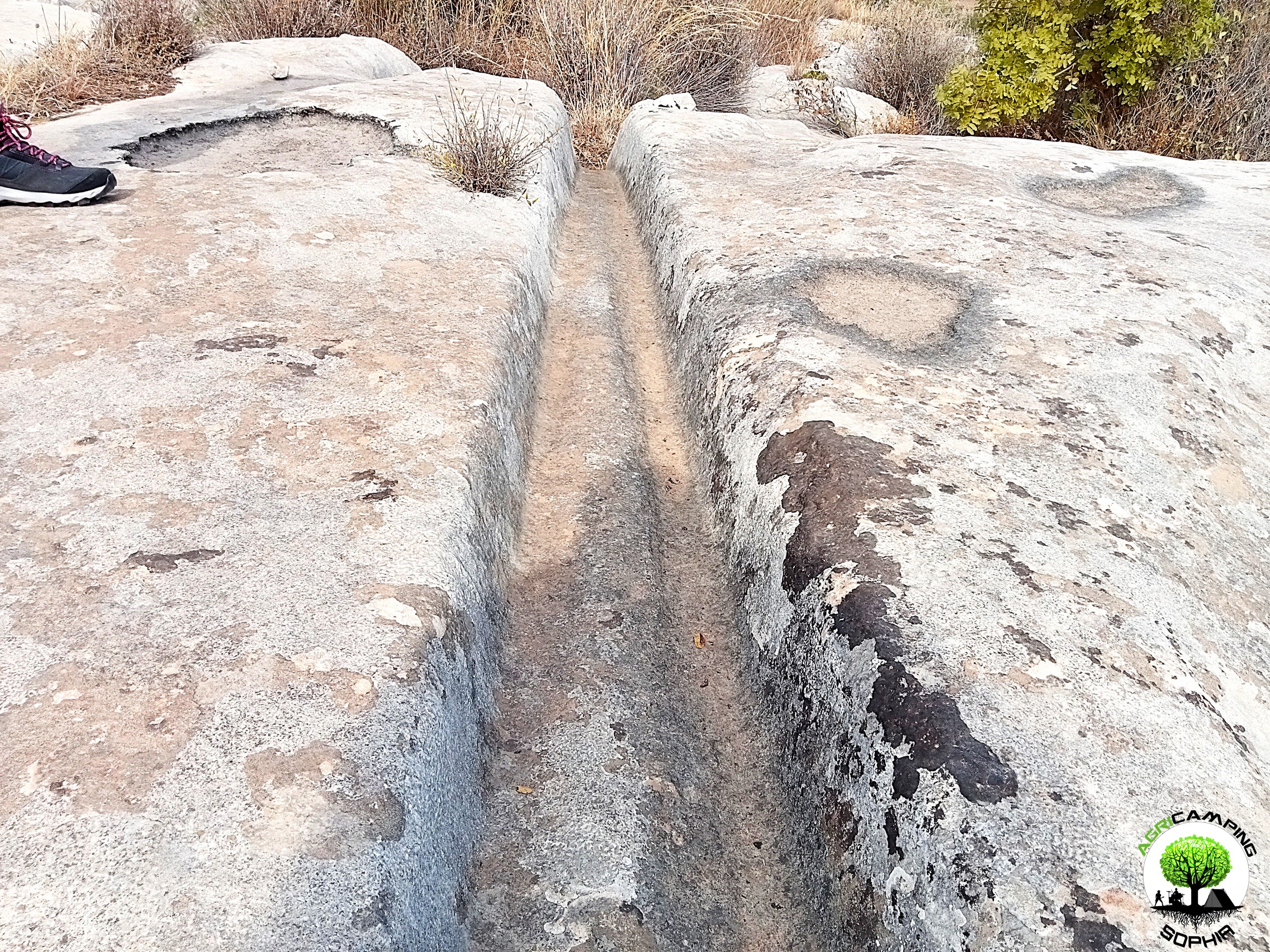 THE POLISHING OF THE CART RUTS
THE POLISHING OF THE CART RUTS
Read also THE PROBLEMATIC EDGES OF THE CART RUTS
I will skip any preamble, referring to to what has already been written regarding the presence of cart ruts in south-eastern Sicily.
To proceed with this comparison I have chosen a probable capital and the corner of a recess present in a block of the northern walls of Eloro that would seem to resemble a pinax, that is, a niche that would have housed a fresco of the heroa, but which a more careful observation refers to a system functional to the grip of the block through a pincer winch. Both elements, like the curt ruts, have remained at the mercy of the elements for millennia, and are therefore subject to comparable wear and tear due to the passage of time. The finishing of the capital should be of a high standard, since it is an architectural element that also has an aesthetic function. The recess, on the other hand, should have...
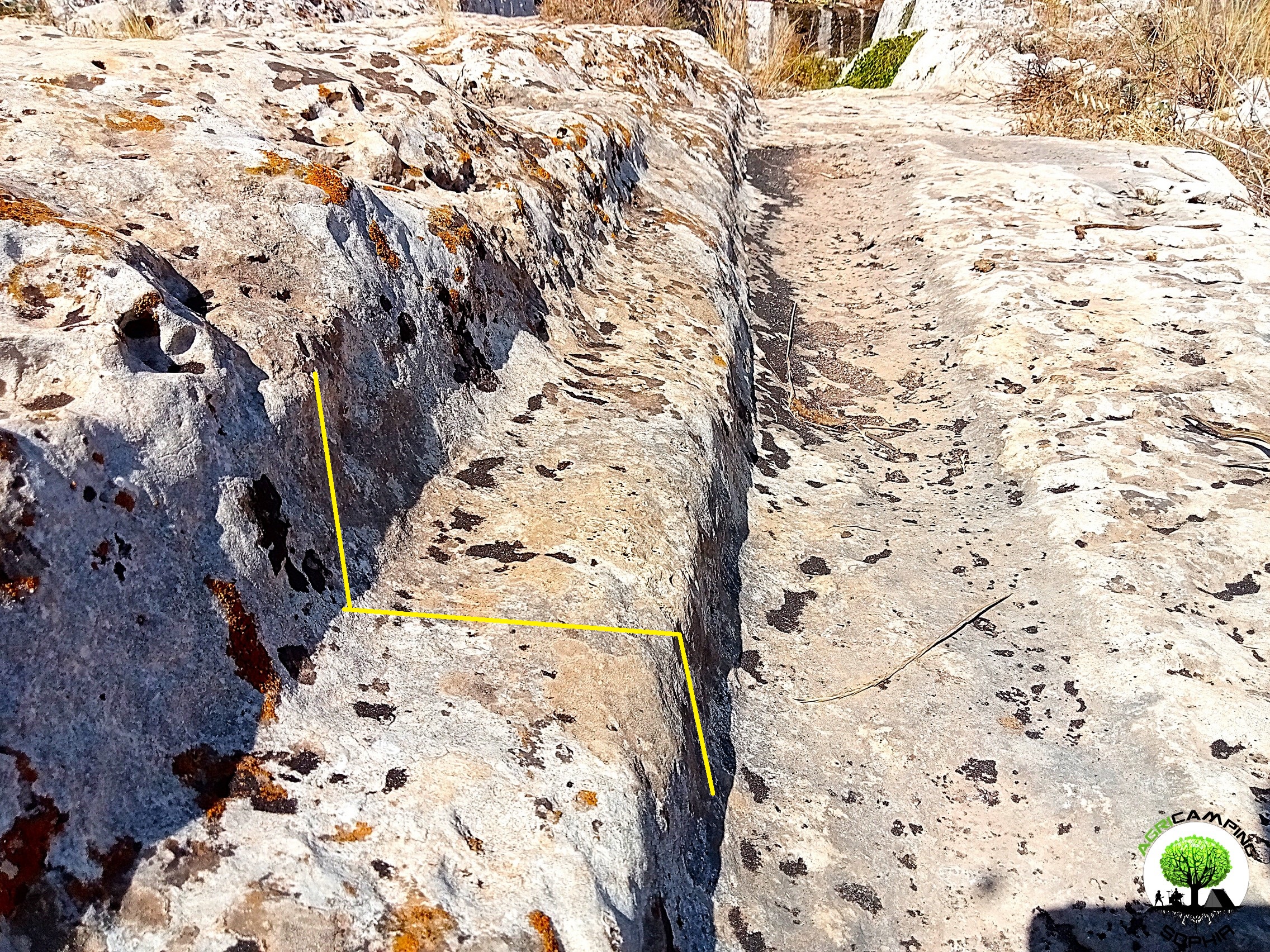 THE PROBLEMATIC EDGES OF THE CART RUTS
THE PROBLEMATIC EDGES OF THE CART RUTS
I will skip any preamble, referring to to what has already been written regarding the presence of cart ruts in south-eastern Sicily.As can be seen in other sites around the world, in some cart ruts I visited, in particular in the Cugni district in Pachino, in the Granati Vecchi district in Rosolini and in the Targia district in Syracuse, a clear border can be seen, a sort of frame, next to the grooves, more marked externally, barely noticeable internally.
The borders I measured have a width of 14-20 centimeters and a height of 8-10 centimeters.
Not all cart ruts have such frames present or particularly evident, regardless of the degree of wear or degradation. They are found above all in cart ruts with less deep grooves.
As already described in detail, given the presence of furrows with a depth of even 65-70 centimeters, the wheels of a possible vehicle would have had to have a...
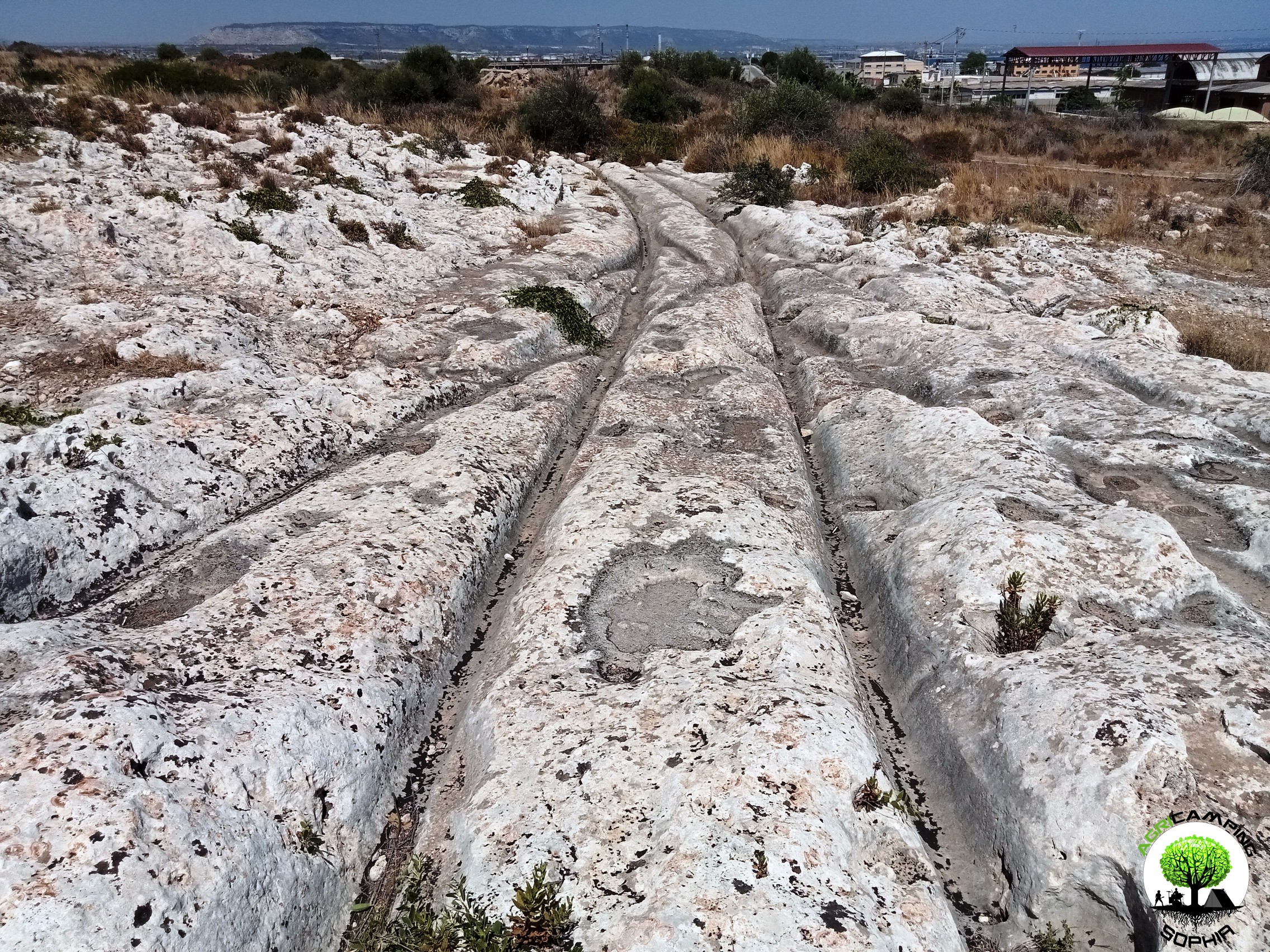 THE PROBLEM OF CART RUTS IN SOUTH-EASTERN SICILY (PART FOUR)
THE PROBLEM OF CART RUTS IN SOUTH-EASTERN SICILY (PART FOUR)
Click here to return to third part
Clapham Junction
As in the Maltese site Misrah Ghar Il-Kbir, also in the Targia and Granatari Vecchi districts the cart ruts intersect and cross each other in a similar way to the track switches in a railway station. The nickname Clapham Junction that was given by David H. Trump to the Maltese site, derives precisely from the similarity with the famous English railway station. For Sagona these are agricultural furrows and water channels, for Mottershead, Pearson and Schaefer these are abandoned paths due to obstacles and wear. Obviously we do not know what the morphology of the Syracuse and Rosolini territory was at times when the cart ruts were traced, but considering the current context, there certainly would have been no agricultural reason to build them, given the presence of fertile land, springs and fresh water courses just a few kilometers...






 DO YOU WANT TO ORGANIZE AN ERASMUS AT AGRICAMPING SOPHIA?
DO YOU WANT TO ORGANIZE AN ERASMUS AT AGRICAMPING SOPHIA? CART RUTS MODELED ON SOFT ROCK?
CART RUTS MODELED ON SOFT ROCK? RACK OR HOUSING FOR CLOGS?
RACK OR HOUSING FOR CLOGS? CART RUTS CUT FROM QUARRIES
CART RUTS CUT FROM QUARRIES CART RUTS AND A FEW TOO MANY PROJECTIONS
CART RUTS AND A FEW TOO MANY PROJECTIONS THE POLISHING OF THE CART RUTS
THE POLISHING OF THE CART RUTS THE PROBLEMATIC EDGES OF THE CART RUTS
THE PROBLEMATIC EDGES OF THE CART RUTS THE PROBLEM OF CART RUTS IN SOUTH-EASTERN SICILY (PART FOUR)
THE PROBLEM OF CART RUTS IN SOUTH-EASTERN SICILY (PART FOUR)